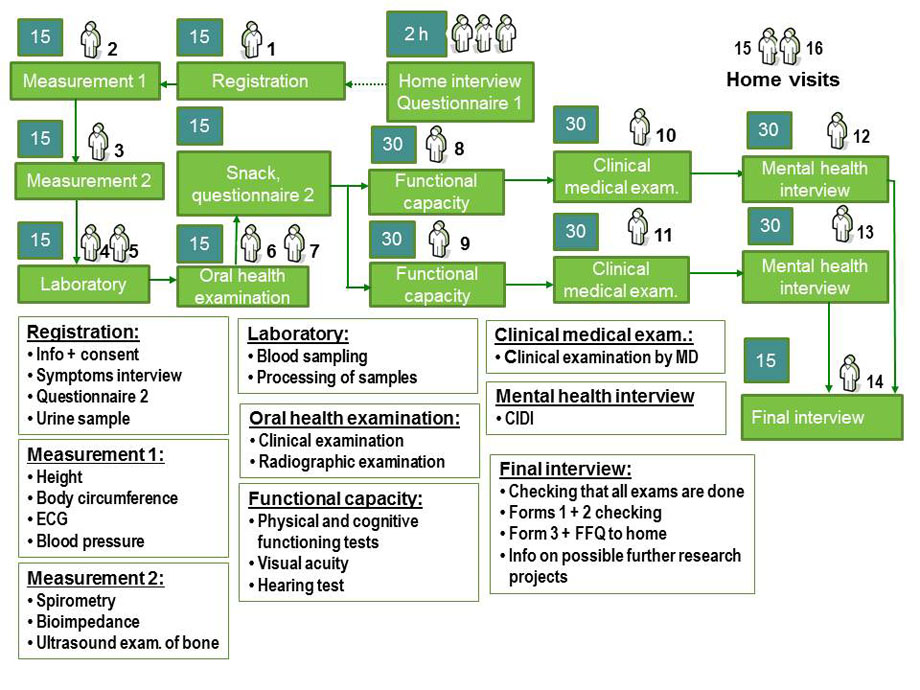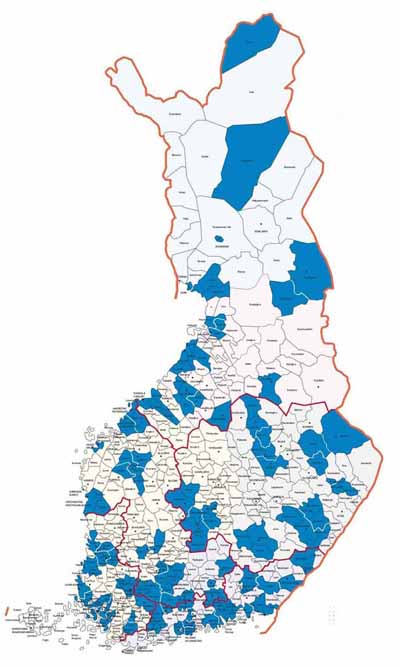Health 2000 in brief
The Health 2000 survey was carried out in 2000–2001 under the leadership of the National Public Health Institute (currently known as the National Institute for Health and Welfare). In total, 8,028 Finns over the age of 30 were invited to participate in the survey. Information about the participants was collected through interviews, an extensive health examination and several questionnaires.
In addition, 1,894 young adults (18–29 years old) were invited to participate in the study. They participated in the health interview and also filled out the questionnaire survey. In addition, 1,278 persons who had participated in the Mini Finland health survey conducted in 1978–1980 were invited to participate in the study. After the conclusion of the actual data collection period, several more advanced studies were carried out on topics such as mental health, cardiovascular diseases, oral health and physical fitness.
The research forms of the Health 2000 survey

Data collection in the survey
The data collection of the survey was carried out in stages as follows
- an interview at the participant's home (1–6 weeks before the first health examination)
- a health examination at a local health centre or other similar place
- a health or functional capacity examination at the home of participants who did not attend the first health examination
- compiling key information based on a telephone interview and/or a follow-up survey on the participants who did not participate in stages 1–3
- compiling register data for follow-up purposes as well as for complementing the baseline data collected in the field study
- conducting more in-depth studies among sub-samples at, e.g. university hospitals, the UKK Institute and the centre for research of the Social Insurance Institution of Finland.
The survey was carried out in 80 regions (health centre areas formed by one or more municipalities), where in total 9,922 persons were selected as research participants. The 15 largest cities as well as 65 other randomly selected health centre areas were selected as the locations for the survey to ensure that the collected data represented both the entire country as well as each of the five special catchment areas.

The study produced a lot of new information on issues such as chronic diseases, health, welfare, functional capacity and work ability as well as service use and need.
Previous data concerning the entire population had been collected in the Mini Finland survey carried out in 1978–1980. The development of the health status of the adult population and related development prospects have been assessed by comparing the results of the Health 2000 survey with previous findings, e.g. the data collected in the Mini Finland survey and later in studies such as the Health 2011 survey. The comparisons have been used as a basis for preparing predictions of the future development of the health, functioning, welfare and need for care and assistance among the population to enable targeting the efforts for promoting health, functioning and welfare as correctly as possible.




